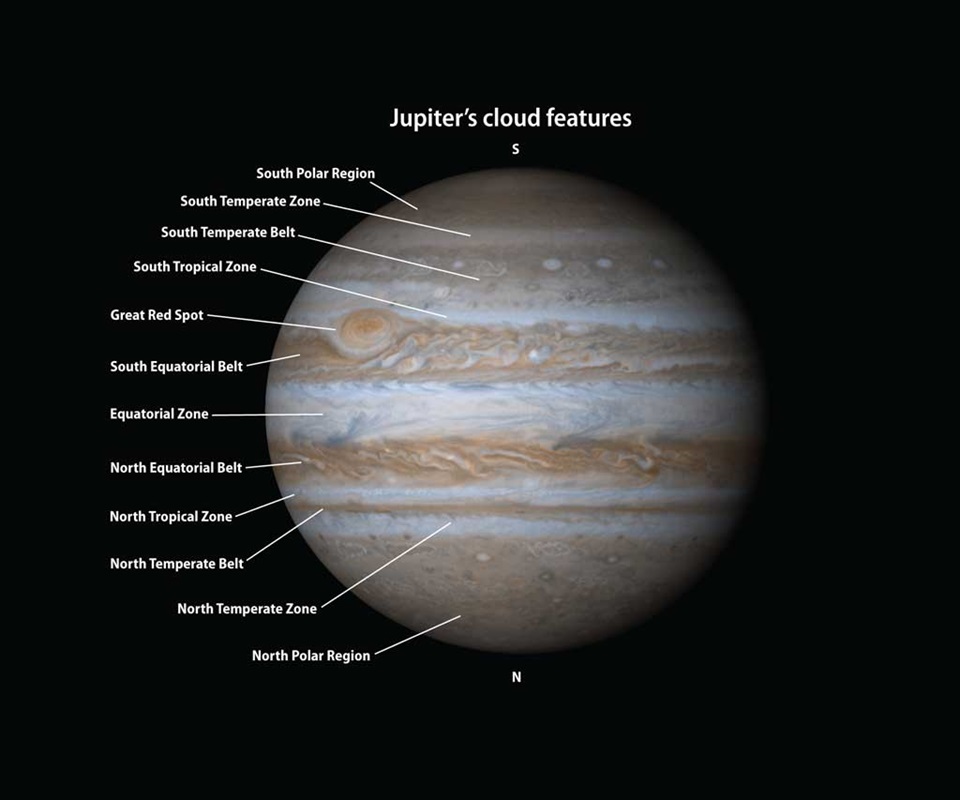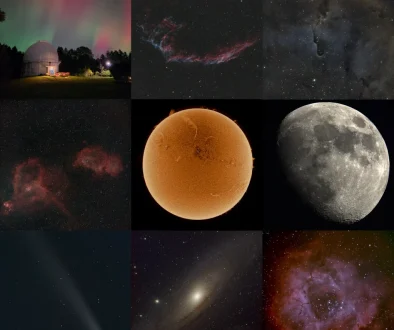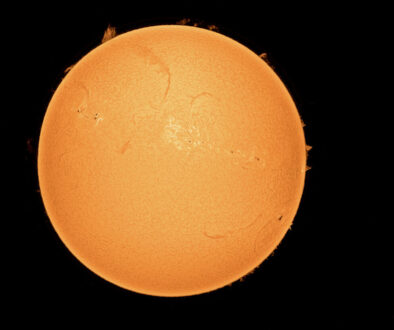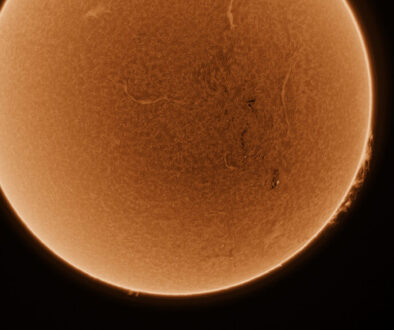A night with Jupiter
Less than 1 minute
Minutes
The night of September 08, 2022 I imaged Jupiter with a 8 inch telescope and a planetary camera from my driveway. Plenty of atmospheric details are visible in the final image: dark-colored belts, light-colored zones and finally the North and South polar regions.
Over the course of the night I also imaged the Great Red Spot (GRS) emerging from the lower edge of Jupiter’s disc and two Galileian moons: Io and Europa.
On September 26, the giant planet will be at opposition and will be visible all night long. The night before (September 25) Jupiter will make its closest approach to Earth since October 1951. Its distance will be 590 million km and it won’t be this close again for the next 107 years, until the year 2129!
I made a short YouTube video of Jupiter, too. Scroll to the end of this page to watch it. I hope you’ll enjoy it!
Date: 2022-09-08
Location: Richmond Hill (ON)
Scope: Celestron 8 SCT, Tele Vue PowerMate 2.5x
Mount: Celestron AVX
Camera: ZWO ASI224MC
Location: Richmond Hill (ON)
Scope: Celestron 8 SCT, Tele Vue PowerMate 2.5x
Mount: Celestron AVX
Camera: ZWO ASI224MC
Filter: ZWO IR Cut filter
Finder Scope: Explore Scientific 8×50 Non-Illuminated Finder Scope
Focuser: Celestron Focus Motor
Software: FireCapture (best 30% of 60 seconds videos), AutoStakkert!3 (AS!3), Registax, Topaz DeNoise AI, GIMP.
Software: FireCapture (best 30% of 60 seconds videos), AutoStakkert!3 (AS!3), Registax, Topaz DeNoise AI, GIMP.
The final processed image of Jupiter. Plenty of atmospheric details are visible:
- dark-colored belts (North Tropical Belt, North Equatorial Belt, South Equatorial Belt);
- light-colored zones (North Temperate Zone, North Tropical Zone, Equatorial Zone, South Tropical Zone, South Temperate Zone);
- and finally the North Polar Region and the South Polar Region.

A combination of wind speed, wind direction, atmospheric jets, and cloud composition causes Jupiter’s banded appearance.
Credits: https://astronomy.com/magazine/ask-astro/2012/10/color-code and NASA/JPL/Space Science Institute



